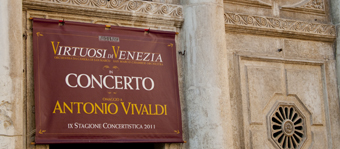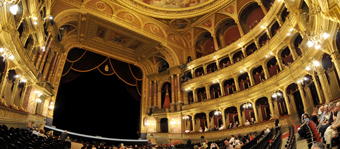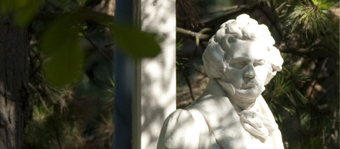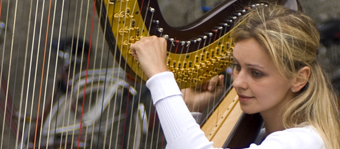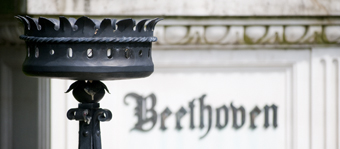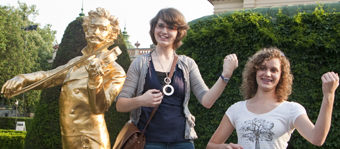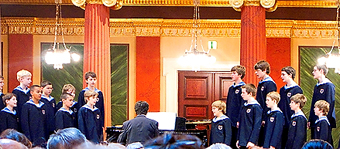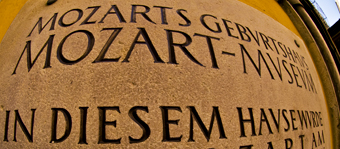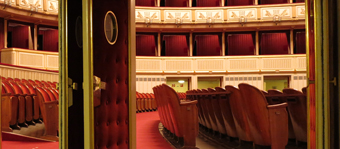During the summer of 1811 Beethoven’s health was suffering, and under his doctor’s orders he traveled to the Bohemian spa town of Teplice. There he began his Seventh Symphony, completed in the spring of 1812. Evidently the recuperative period produced an extraordinary creative spark in Beethoven, as he said that this symphony was one of his finest works. Debuted in 1813 as part of a charity concert for soldiers injured in the Battle of Hanau against Napoleon’s troops, it had a tremendous reception, with three more performances within ten weeks. Richard Wagner famously called the symphony “the Apotheosis of the Dance itself,” referring to its great variety of dance-like rhythms. Rhythmic energy indeed drives the symphony; the long introduction moves through ascending scales to the Vivace, which has an undeniably triumphal quality. The haunting Allegretto fixates on an unrelenting theme with a surprisingly simple rhythmic profile, and moves from faint beginnings into a grand climax. The Scherzo and Trio take a boisterous romp, with occasional periods of calm, and Donald Tovey has described the Allegro con brio as containing “Bacchic fury.
This was written by Molly Barnes, a doctoral student and teaching assistant in the University of North Carolina Chapel Hill Department of Music. She wrote it for the program of the Orchestre Révolutionnaire et Romantique conducted by John Eliot Gardiner in November 2011.
